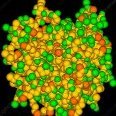Community Satellite Images Reveal Rare Earth Mining Near Border, Raising Toxic Contamination Fears
-
Recently Browsing 0 members
- No registered users viewing this page.
-
Topics
-
-
Popular Contributors
-
-
Latest posts...
-
1
Gunman in Deadly C.D.C. Shooting Fixated on Covid Vaccine
It wasn't CIVID anti-vax misinformation. It was his vaccine injury and the lack of compassion and meaningful compensation that set the guy off. I understand his frustration. It was 2 years after my vaccine injury the day after my 2nd Pfizer before the hospital even admitted that mine was a commonly reported side effect. Before that, they didn't know what caused it, but claimed it definitely wasn't the "safe and effectives". I'm so glad to see the squelched studies finally making it into the light of day. -
35
While Trump fails, Carney outsmarts him once again
As opposed to the current POTUS who, like Jesus, forgives all sins against him 🤣🤣🤣 cummon bro, you have to do way better than that tripe.- 1
-

-
48
UK Pensions Query
You say that exits at airports are now automatically recorded. If that is the case then it must have changed only in recent years. I know for a fact that it was not always the case. -
-
28
Accident 15-Year-Old Dies After Motorcycle Crash, 14-Year-Old Critical
The shortened quote made no change to the context of your comment, so, no, I do not have to quote the entire sentence. The context was a fatal motorbike accident. -
35
While Trump fails, Carney outsmarts him once again
To whom is little tirade addressed?- 1
-

-
-
Popular in The Pub









Recommended Posts
Create an account or sign in to comment
You need to be a member in order to leave a comment
Create an account
Sign up for a new account in our community. It's easy!
Register a new accountSign in
Already have an account? Sign in here.
Sign In Now